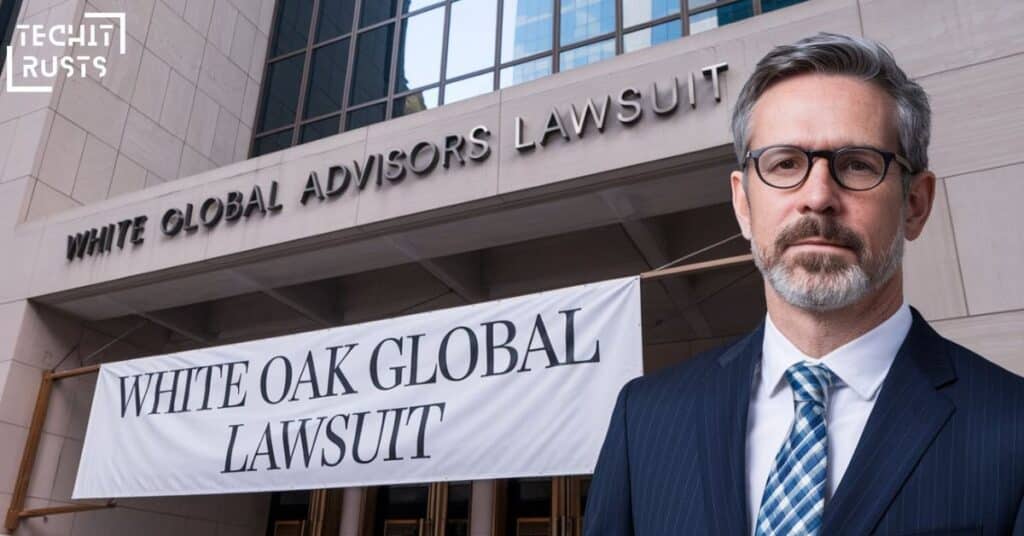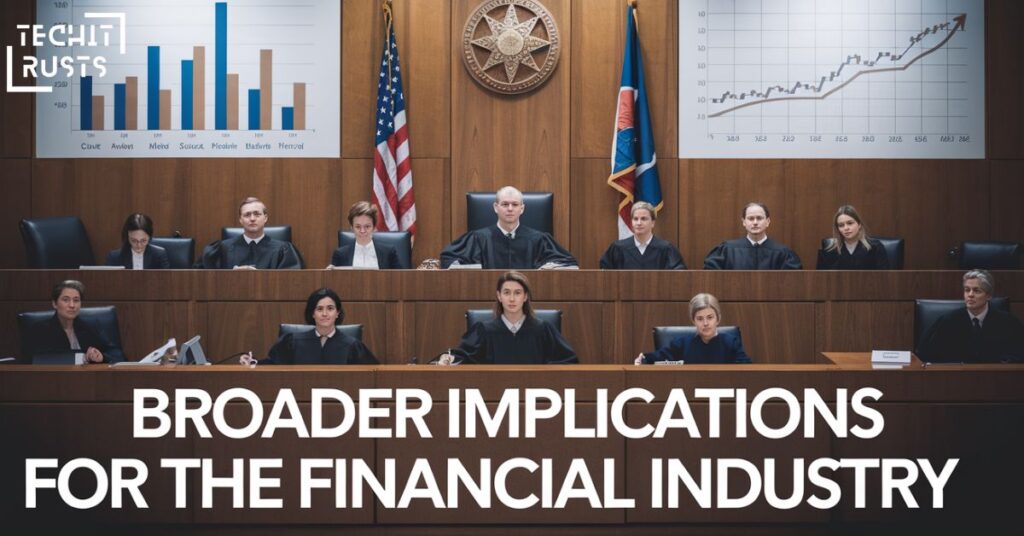The White Oak Global Advisors lawsuit has captured the attention of financial institutions, regulatory bodies, and investors alike. This high-profile case revolves around allegations of fiduciary misconduct, investment mismanagement, and legal liabilities for financial firms, casting a shadow over one of the most prominent private debt firms in the industry.

As the legal proceedings unfold, the lawsuit not only threatens the firm’s reputation but also signals potential shifts in the financial regulatory reforms landscape. In this article, we’ll delve into the case’s intricacies, explore the key allegations, and assess its potential impact on the financial sector.
Background of the Allegations
The lawsuit against White Oak Global Advisors stems from claims that the firm, which specializes in lending to small and mid-sized companies, violated its fiduciary duty to clients. Allegations include investment mismanagement, misappropriation of client funds, and failing to disclose critical investment risks and fees.
Fiduciary responsibility in asset management requires firms to act in their clients’ best interest, making these accusations particularly damaging.
Timeline Leading to the Lawsuit
- 2016–2019: Complaints surface from multiple investors about undisclosed fees and poor investment performance.
- 2020: A whistleblower report alleges financial misconduct at White Oak, leading to increased regulatory scrutiny.
- 2022: The lawsuit is filed, accusing White Oak of mismanaging pension funds and violating fiduciary obligations.
- 2024: The case is ongoing, with critical developments in the discovery phase legal process.
These events highlight a pattern of alleged financial misconduct and lack of transparency, prompting investors and regulators to take legal action.
Key Allegations Against White Oak Global Advisors

At the heart of the White Oak Global Advisors lawsuit are several serious accusations. These claims revolve around the firm’s handling of client funds and investment opportunities.
Mismanagement of Funds
White Oak is accused of investment mismanagement, which includes making poor investment choices that resulted in significant losses for clients. Examples include investing in high-risk assets without proper disclosure and allocating client funds to ventures with potential conflicts of interest.
Fiduciary Duty Violation
One of the most damning accusations is that White Oak violated its fiduciary responsibility by not acting in the best interests of its clients. This includes failing to provide adequate information about the risks associated with certain investments and charging undisclosed fees, which further eroded investor trust.
Conflicts of Interest
The lawsuit also highlights conflicts of interest in investments, where White Oak allegedly prioritized its own financial gains over those of its clients. In some cases, the firm is accused of using client funds to back investments that directly benefited the firm or its executives, an ethical breach that has contributed to the lawsuit’s prominence.
Case Study: Mismanagement of Pension Plans
One of the key groups affected by White Oak’s alleged actions are pension funds. In one instance, a pension plan filed a suit citing pension plan lawsuits. The fund lost millions due to poor investment decisions made by White Oak, who failed to disclose the full extent of the risks involved.
This case highlights the devastating real-world impact of fiduciary misconduct on retirees relying on these funds.
The Legal Proceedings: Where the Case Stands
As the lawsuit progresses, both sides are building their cases through various stages of the legal process. The discovery phase legal process has been particularly revealing, with damning documents and testimony emerging that could sway the case in the plaintiffs’ favor.
Key Developments in the Lawsuit
- Discovery Process: Key documents, including emails and financial records, have shed light on internal communications that suggest deliberate misappropriation of client funds and a lack of transparency in White Oak’s dealings.
- Court Filings: Recent filings indicate that White Oak attempted to dismiss certain charges, though the courts have allowed many of the most significant allegations to proceed.
Arguments from Both Sides
- Plaintiffs’ Claims: The plaintiffs argue that White Oak engaged in systematic fiduciary misconduct, violating the trust placed in them by investors.
- White Oak’s Defense: White Oak has denied all allegations, claiming that any investment losses were the result of market conditions, not misconduct. They also argue that their fees and risks were fully disclosed to clients.
Impact on White Oak Global Advisors

The lawsuit has already started to take a toll on White Oak’s reputation and financial stability. Even before the case reaches a conclusion, the firm is experiencing significant reputational damage and financial strain due to legal costs and lost business.
Financial Consequences
- Legal Costs: White Oak has incurred substantial legal expenses as it defends itself against the numerous allegations. Additionally, if the firm is found liable, it could face regulatory penalties for investment firms and significant damages.
- Loss of Business: Clients have become wary of associating with a firm embroiled in such serious allegations. This has led to withdrawals of funds and a decline in new business.
Reputational Damage
The impact on White Oak’s reputation cannot be overstated. In the financial sector, trust is everything, and allegations of fiduciary duty violations severely undermine that trust. Investor trust and integrity are critical, and once eroded, they are difficult to rebuild.
| Reputational Impact | Description |
| Loss of client trust | Investors may withdraw funds and avoid new business opportunities with White Oak |
| Media scrutiny | Negative press coverage further damages public perception of the firm |
| Regulatory scrutiny | Regulatory bodies may increase their focus on White Oak, leading to more audits and potential fines |
Broader Implications for the Financial Industry

The White Oak case is not just an isolated incident—it reflects broader concerns within the financial industry about ethical conduct in finance, transparency, and investment firm compliance. This lawsuit could set a precedent for future litigation and regulatory actions.
Increased Regulatory Scrutiny
As a result of this case, regulators like the Securities and Exchange Commission (SEC) are likely to intensify their focus on private debt firms and other financial institutions. This could lead to financial governance reforms aimed at preventing similar instances of financial misconduct in the future.
Investor Confidence and Industry Reforms
The case has already caused a ripple effect across the industry. Investors are demanding greater transparency in investment management and are scrutinizing the practices of firms that handle their money more carefully. This could lead to more investment risk disclosure requirements and stricter compliance standards across the board.
| Key Reforms | Potential Impact |
| Stricter fiduciary regulations | Firms will need to enhance their compliance practices |
| Enhanced risk disclosure requirements | Greater transparency will be required in client communications |
| Higher standards for investment reporting | Firms must improve their reporting on fees and risks |
Lessons Learned: What the Financial Industry Can Take from This Case
The White Oak Global Advisors lawsuit serves as a cautionary tale for financial institutions. It underscores the importance of fiduciary responsibility in asset management and highlights the risks associated with conflicts of interest in investments.
Fiduciary Duty and Client Trust

One of the most important takeaways from this case is the critical nature of fiduciary responsibility. Asset managers must prioritize their clients’ interests above all else, as failure to do so can result in financial litigation and irreparable reputational damage.
Importance of Transparency
Transparency in investment management is key to maintaining investor trust. Firms need to be upfront about fees, risks, and potential conflicts of interest. Failure to do so can lead to pension plan lawsuits and other legal actions that can cripple a firm.
Proactive Compliance and Governance
In an era of increasing regulatory scrutiny, firms must be proactive in ensuring they comply with industry standards. This includes regularly auditing their practices, training employees on ethical standards, and implementing robust compliance programs.
FAQs
What Are the Main Allegations Against White Oak Global Advisors?
The primary allegations include investment mismanagement, fiduciary duty violation, and misappropriation of client funds. The lawsuit claims that White Oak failed to disclose critical risks and fees, causing financial harm to its clients.
What Has Happened So Far in the Legal Proceedings?
The lawsuit is currently in the discovery phase, where key documents and testimony have been revealed. The case has not yet gone to trial, but significant evidence has already surfaced.
What Could Be the Financial and Reputational Consequences for White Oak?
White Oak could face severe legal liabilities, including fines, damages, and regulatory penalties. The firm’s reputation has already taken a hit, and it may struggle to regain investor trust.
How Might This Case Influence the Broader Financial Sector?
The lawsuit could lead to stricter financial governance reforms and increased regulatory scrutiny across the industry. Firms may need to implement more transparent practices to avoid similar legal actions in the future.
Conclusion
The White Oak Global Advisors lawsuit is a wake-up call for the financial industry. It highlights the importance of maintaining high ethical standards, transparency, and strict compliance with regulatory obligations.
As the legal battle unfolds, the case’s outcome will have far-reaching implications for White Oak and the broader financial sector. Firms must take this opportunity to reflect on their own practices and ensure they are upholding their fiduciary responsibility to avoid a similar fate.
>>>Read Also: Stockton Asbestos Legal Questions: A Complete Guide For Victims

Ashi is the site admin for “techitrusts.com” and specializes in writing within the journal category. If you need more detailed information about his background or work, feel free to ask!